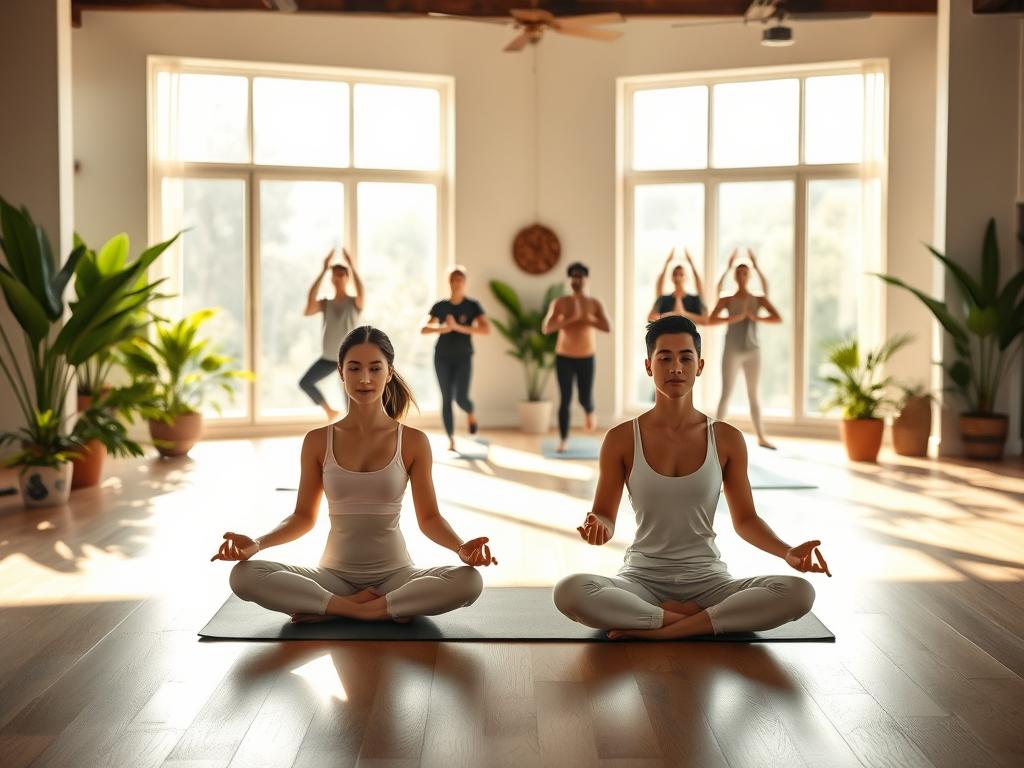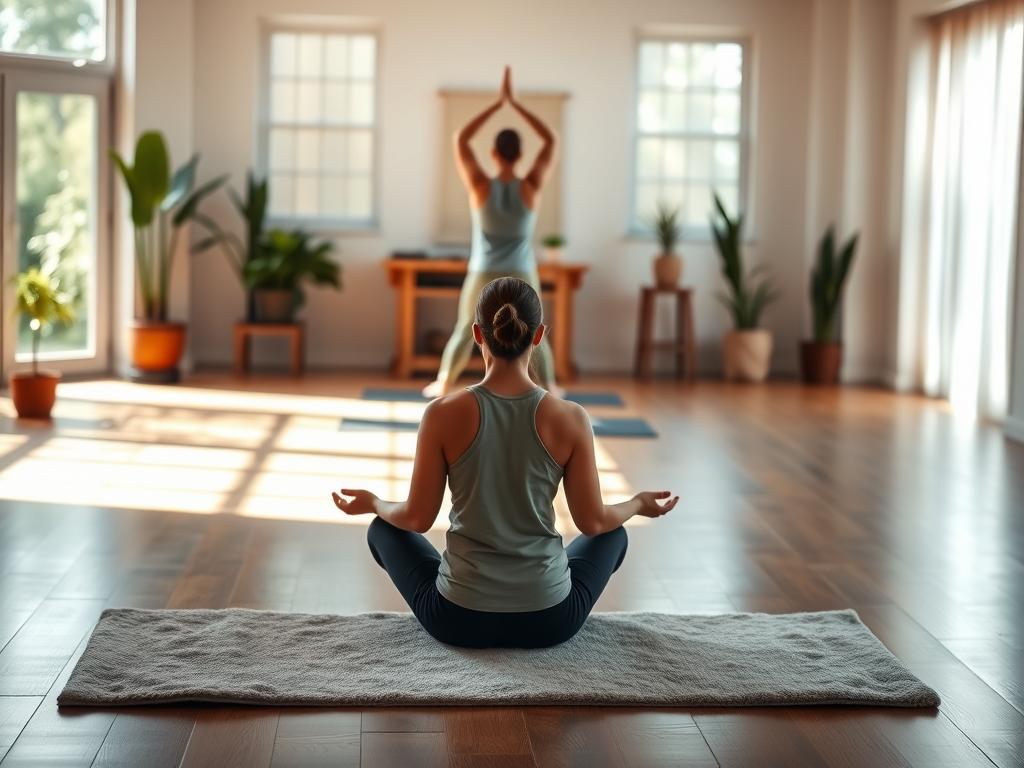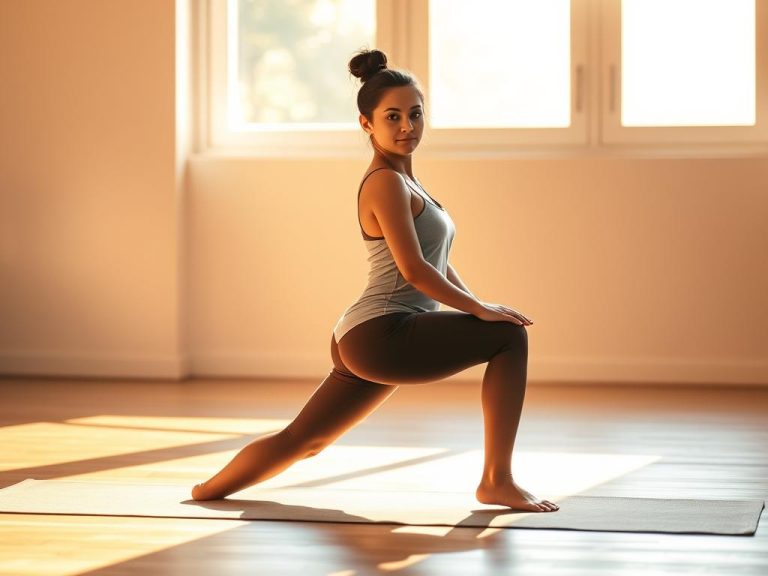Meditation & Yoga: Which Should Come First for Maximum Benefits?
Yoga and meditation are ancient practices that unlock profound mind-body connections. They offer transformative wellness strategies for modern practitioners. These disciplines stem from rich Indian cultural traditions1.
Mindfulness meditation can reduce stress and anxiety symptoms. It also improves self-awareness and overall well-being. Yoga enhances physical flexibility, strength, and emotional balance1.
Combining yoga and meditation may lead to 25% greater stress reduction. This is compared to practising either discipline independently. The synergy creates a powerful toolkit for managing health challenges1.
Studies show 30-50% reduction in anxiety levels through consistent meditation practice. Integrating yoga and meditation helps cultivate resilience and inner harmony1.
The optimal sequencing of yoga and meditation is crucial. It maximises their transformative potential. The following sections will explore these complementary disciplines in depth.
Understanding the Connection Between Yoga and Meditation
Yoga and meditation share deep roots in ancient Indian spiritual traditions. They form a holistic approach to wellness that goes beyond physical exercise. This approach delves into exploring mindfulness practices with remarkable depth2.
Yoga philosophy is a complete system for personal transformation. It extends far beyond physical postures. Ancient wisdom sees yoga as a path to spiritual growth and self-understanding3.
Historical Origins and Philosophical Foundations
Yoga began in ancient India as a complex system of spiritual growth. It blends physical, mental, and spiritual aspects. This creates a unified approach to human experience2.
The Eight Limbs of Yoga
The eight limbs of yoga offer a structured path to holistic well-being:
- Yama: Ethical standards and moral restraints
- Niyama: Self-discipline and spiritual observances
- Asana: Physical postures
- Pranayama: Breath control
- Pratyahara: Sensory withdrawal
- Dharana: Concentration
- Dhyana: Meditation
- Samadhi: Spiritual absorption
Modern Integration of Practices
Today, people embrace yoga and meditation as complementary practices for overall well-being. Regular practice can boost mental clarity, emotional balance, and physical fitness2. Together, these practices create a powerful tool for personal growth3.
Combining yoga and meditation often yields the best results for a positive mindset. This integration allows for a deeper mind-body connection. It promotes awareness and inner peace3.
The Physical and Mental Benefits of Combined Practice

Yoga and meditation together offer remarkable benefits for body and mind4. This powerful duo enhances stress reduction, improves flexibility, and boosts mental clarity. The synergy between movement and mindfulness creates a holistic approach to wellness4.
Research highlights several key advantages of this integrated practice:
- Enhanced cognitive functions4
- Reduced anxiety and stress levels5
- Increased physical flexibility4
- Improved emotional stability5
Yoga prepares the body for meditation by releasing muscle tension4. It calms the nervous system and quiets mental chatter. This often leads to a deeper meditative state5.
| Yoga Benefits | Meditation Benefits |
|---|---|
| Increases strength | Reduces stress |
| Improves flexibility | Enhances mental clarity |
| Reduces chronic pain | Increases emotional regulation |
The fusion of yoga and meditation fosters profound mindfulness4. It transforms both physical and mental well-being, creating a balanced and harmonious lifestyle5.
“The union of body and mind through yoga and meditation creates a pathway to inner peace and holistic health.”
Should I meditate before or after yoga?
Your yoga and meditation sequence can greatly affect your practice. Everyone’s journey is unique. Finding the right timing for meditation can transform your wellness routine.
Traditional yoga suggests a structured approach to combining meditation and movement. The key is finding what works best for you6.
Benefits of Meditating Before Yoga
Meditation before yoga offers several advantages:
- Centres the mind and sets clear intentions7
- Reduces stress levels before physical practice6
- Enhances mental focus and concentration6
Pre-workout meditation can lower depressive symptoms by 40%. It also helps reduce cortisol levels7.
Advantages of Yoga First Approach
Many experts suggest doing yoga before meditation to:
Physical movement can calm your nervous system. This creates a more receptive state for meditation8.
Factors Influencing Your Choice
Your personalised practice depends on several factors:
- Energy levels
- Time of day
- Personal wellness goals
- Current mental and physical state
Try both approaches to find what suits you best. This will help you discover your ideal wellness journey6.
Essential Yoga Poses and Meditation Techniques for Optimal Results
The right yoga asanas and meditation postures can transform your practice. Gentle poses like Child’s pose, Cat-cow stretch, and Seated forward bend prepare the body. They release tension and increase flexibility, improving comfort for longer meditation sessions9.
Breathing exercises bridge physical yoga practice and seated meditation. Ujjayi pranayama and alternate breath (nadi shodana pranayama) regulate energy flow and enhance focus10. A balanced approach should include standing poses, seated poses, twists, and forward folds9.
Choose meditation techniques that complement your yoga practice. Mindfulness and Vipassana meditation work well after yoga poses. They help deepen your practice and enhance physical healing10.
Research shows that integrating meditation can improve mental relaxation and emotional release10. Regular practice creates a powerful synergy between yoga asanas and meditation postures. This nurtures both body and mind, leading to optimal results.
FAQ
What is the fundamental connection between yoga and meditation?
Yoga and meditation share ancient Indian roots. Both aim to enhance mental, physical, and spiritual well-being. These interconnected practices promote mindfulness, reduce stress, and foster personal growth.
How do the Eight Limbs of Yoga relate to meditation?
Meditation (Dhyana) is the seventh limb of yoga. It’s a crucial stage in yogic practice. Meditation bridges physical practice and spiritual consciousness, developing mental focus and inner awareness.
Is it better to meditate before or after yoga?
The best sequence depends on your goals and preferences. Some find meditating before yoga centres the mind. Others use yoga to prepare for deeper meditation.
What scientific evidence supports the benefits of combining yoga and meditation?
Studies show yoga and meditation reduce stress and improve mental clarity. They enhance emotional regulation and change brain plasticity. Research also reveals positive effects on physiological responses to stress.
Can beginners effectively practice yoga and meditation together?
Yes, beginners can start with gentle poses and simple meditation techniques. Guided sessions are recommended for newcomers. Focus on proper breathing and approach the practice with patience.
How long should a combined yoga and meditation session typically last?
Sessions can range from 30 to 90 minutes, depending on fitness and time. Beginners might start with 15-20 minute sessions. Gradually increase duration as you become more comfortable.
Are there specific yoga poses that prepare the body for meditation?
Yes, certain poses are effective in preparing for meditation. These include Child’s Pose, Cat-Cow Stretch, and Seated Forward Bend. Corpse Pose (Savasana) is also excellent for creating a calm state.
What role does breathing play in connecting yoga and meditation?
Breathing (pranayama) links physical yoga practice and meditation. It helps regulate the nervous system and calm the mind. Controlled breathing creates a smooth transition between movement and stillness.
Can yoga and meditation help with mental health conditions?
Research shows these practices can support managing anxiety and depression. They’re beneficial for stress-related disorders too. However, they should complement, not replace, professional medical treatment.
How often should one practice yoga and meditation?
Aim for a consistent practice 3-5 times per week. Short, regular sessions are more beneficial than infrequent, long ones. Consistency is key for developing physical and mental resilience.
Source Links
- How to Meditate While Doing Yoga (Because We’ll Take All the Calm We Can Get)
- Should I Meditate Or Do Yoga First?
- Should You Practice Yoga After Or Before Meditation? – MindOwl
- You Should Do Yoga Before Meditating: Here’s Why and How – Insight Timer Blog
- Should You Meditate Before or After a Workout? This Is What Experts Recommend
- Should I Meditate or Do Yoga First? – Yogigo
- Should You Meditate Before or After You Work Out? – Healium
- Should I Do Meditation Before Or After Yoga
- Yoga Before Meditation: 11 Poses to Practice • Yoga Basics
- How to Mix Yoga Poses and Meditation for a More Rewarding Practice






